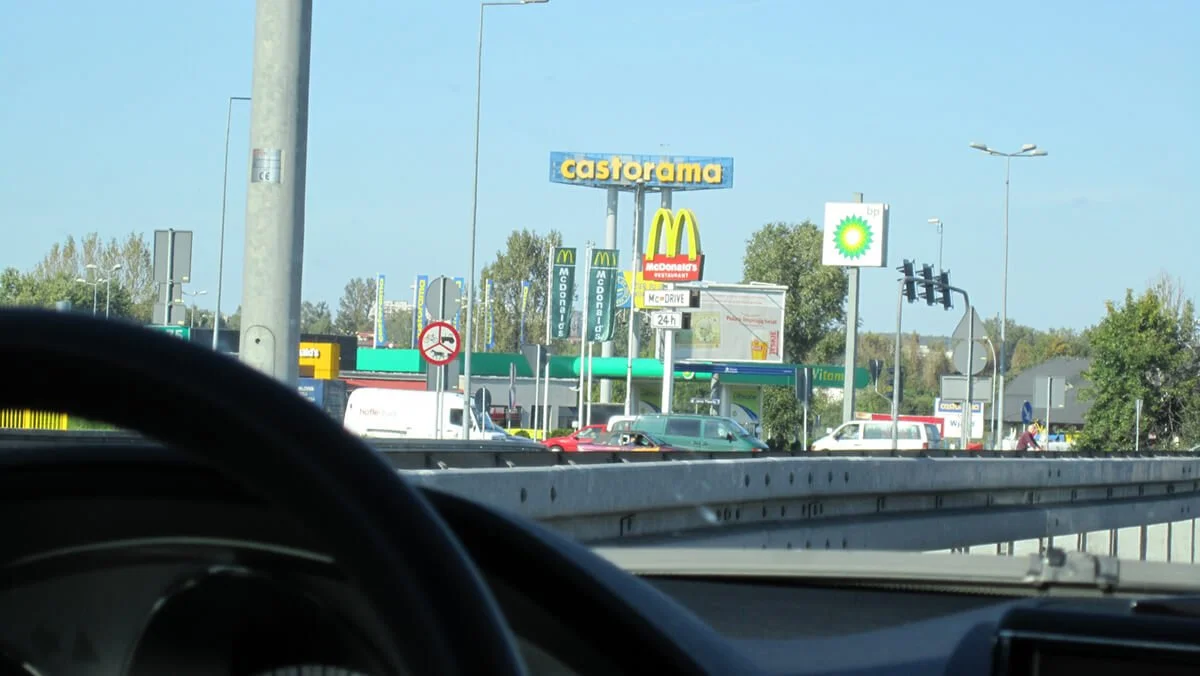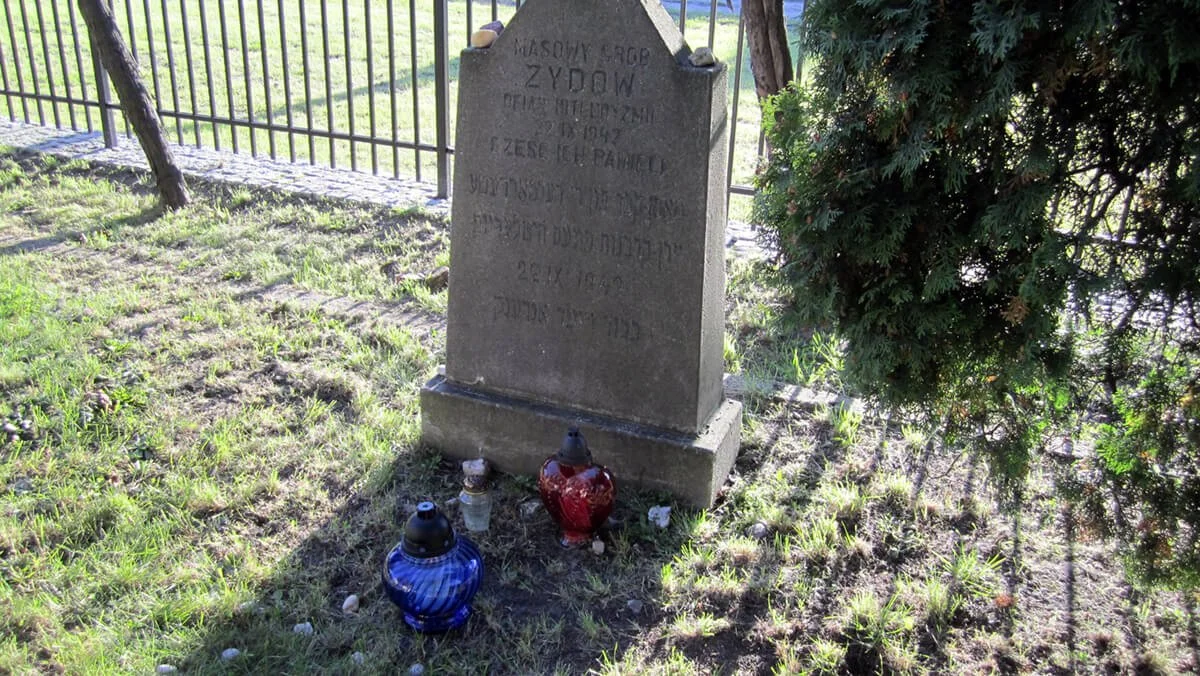Częstochowa
In September, 2010 we traveled to Poland and, along with our cousin Roman Weinfeld, visited some of the towns where our ancestors once lived. Below, following the next few paragraphs, are a few of our photographs from our stop in Częstochowa.
As we approached Częstochowa on the road from Żarki, the scene was far different from the one our parents and grandparents knew. The town is still a place of pilgrimage for modern day Catholics, but today both Częstochowa and its visitors live in a different world with different needs. The approach to the town from the main highway reflects those needs. By 2010 over 70 years had gone by since our ancestors lived in the Jewish neighborhood near the Warta River. The town population has doubled in size to more than a quarter million people. And the number of Jews has dwindled from a high of almost 30,000 in the 1930s, before the Holocaust. In 2004, according to the Jewish Telegraphic Agency, there were only 37 people who identified as Jews living in Częstochowa.
Finding remnants of the Jewish community where our Halborn ancestors once lived was not an easy task and visiting the neglected cemetery in 2010 was strange and disheartening. Hundreds of graves were vandalized just three years before our visit. (But ironically, even today, with no Jewish community remaining in Częstochowa and efforts by Jewish groups such as the Israeli Gidonim project to clean and restore Jewish cemeteries in Poland, one can find comments on the Internet that attribute the desolation we found to the "fact" that Poles take care of their family graves but Jews do not.) A few photographs of the cemetery taken during our visit are included in our slideshow, below. We have also included some photos of a memorial on Kawia Street.
Kawia was the northernmost street within what became known as the Częstochowa Big Ghetto. By 1942 an estimated 50,000 Jews from Częstochowa and neighboring villages had been crowded together into the ghetto. Then, in mid 1942, in preparation for mass deportations to Treblinka and for closing down part of the Big Ghetto, Jews were removed from a part of Kawia Street so that buildings could be demolished and a new burial ground created. The Częstochowa Jewish Cemetery is located across the Warta River, several kilometers away from the ghetto site. Thus Kawia Street was viewed by the Nazis as a necessary and more convenient place to bury some of the victims they anticipated would be shot during the forced roundups.
The cleared area across the street from 21 Kawia Street, became the mass grave of hundreds of Częstochowa Jews who were slaughtered during the 1942 selections. Only a small number of workers were permitted to live for awhile -- first in what became known as the Small Ghetto, and then in SS run barracks. The memorial marks the slaughter of hundreds of Jews who were killed during the roundups that took place on September 22, 1942 and in the days that followed.
There are few remnants of the Częstochowa ghetto today and the memorial, like the Częstochowa Jewish Cemetery, is not often visited. The site includes two areas protected by fences and locked gates -- features that left us wondering about the atmosphere of Częstochowa today. The keys are kept in a small shop across Kawia Street. The shopkeeper, when asked, will leave her shop to unlock the gates to the two small, grassy enclosures of the memorial.












